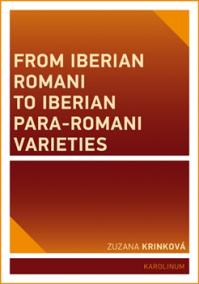From Iberian Romani to Iberian Para-Romani Varieties
Dátum vydania: 2015
The language contact of the inflectional Romani and Spanish, Catalan and other languages of the Iberian Peninsula began in the first half of the 15th century. The long-term and immediate contact between Romani and the language of the majority in several locations in Europe resulted in the emergence of what are known as the Para-Romani varieties – mixed languages ...
Bežná cena knihy: 16,45 €
Naša cena knihy: 12,34 €
Ušetríte: 25 %
Dostupnosť: Posledný kus na externom sklade
Detaily o knihe
Počet strán: 272
Väzba: Brožovaná
Rozmer: 160x230 mm
Jazyk: EN Anglický Jazyk
EAN: 9788024629360
Rok vydania: 2015
Žáner: Cudzojazyčná literatúra
Zákazníci, ktorí si kúpili túto knihu, si kúpili aj...
O knihe
The language contact of the inflectional Romani and Spanish, Catalan and other languages of the Iberian Peninsula began in the first half of the 15th century. The long-term and immediate contact between Romani and the language of the majority in several locations in Europe resulted in the emergence of what are known as the Para-Romani varieties – mixed languages which predominantly make use of the grammar of the surrounding language, while at least partly retaining the Romani-derived vocabulary. In the Iberian Peninsula, several Para-Romani varieties emerged. The process of their phonological, morphological and lexical evolution from the inflectional Iberian Romani is described in this book. In the opinion of the author, the original form of the Iberian Romani of the 15th century was similar to the -Early Romani- of the Byzantine period, which is thought to have ended by the 14th century when the Romani language started to disperse throughout Europe. The influence of Spanish (and other languages of the Iberian Peninsula) is evident not only in the morphology and syntax, but also in the phonology and semantics of the Iberian Para-Romani varieties. On the other hand, the Romani elements preserved in these varieties show conservative features as well as specific innovations, many of which can hardly be attributed to language contact. The description of the Iberian Para-Romani varieties is based on an extensive body of language material dated between the 17th and 21st centuries and also draws attention to some language phenomena in these varieties which, until now, have not previously been described.













